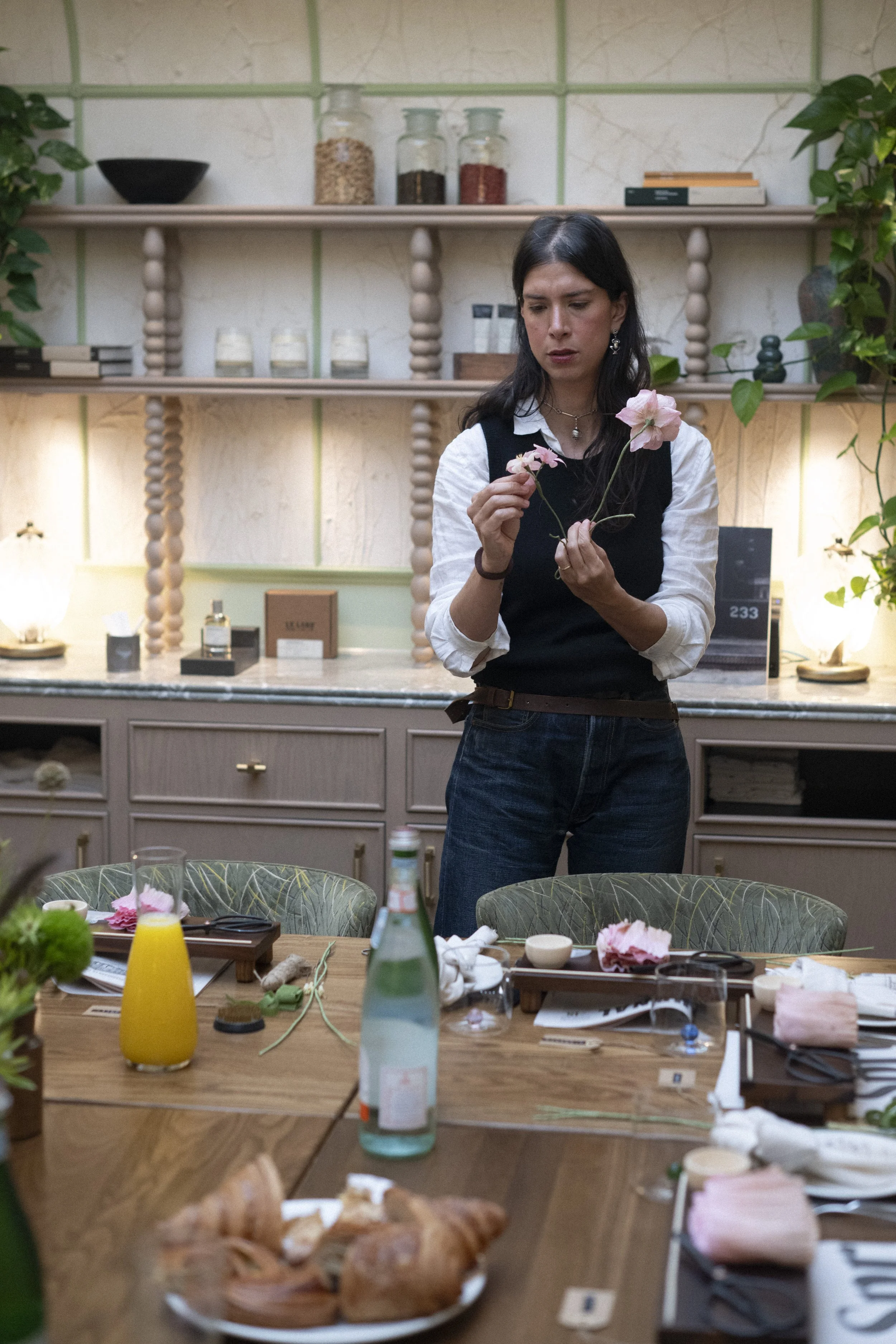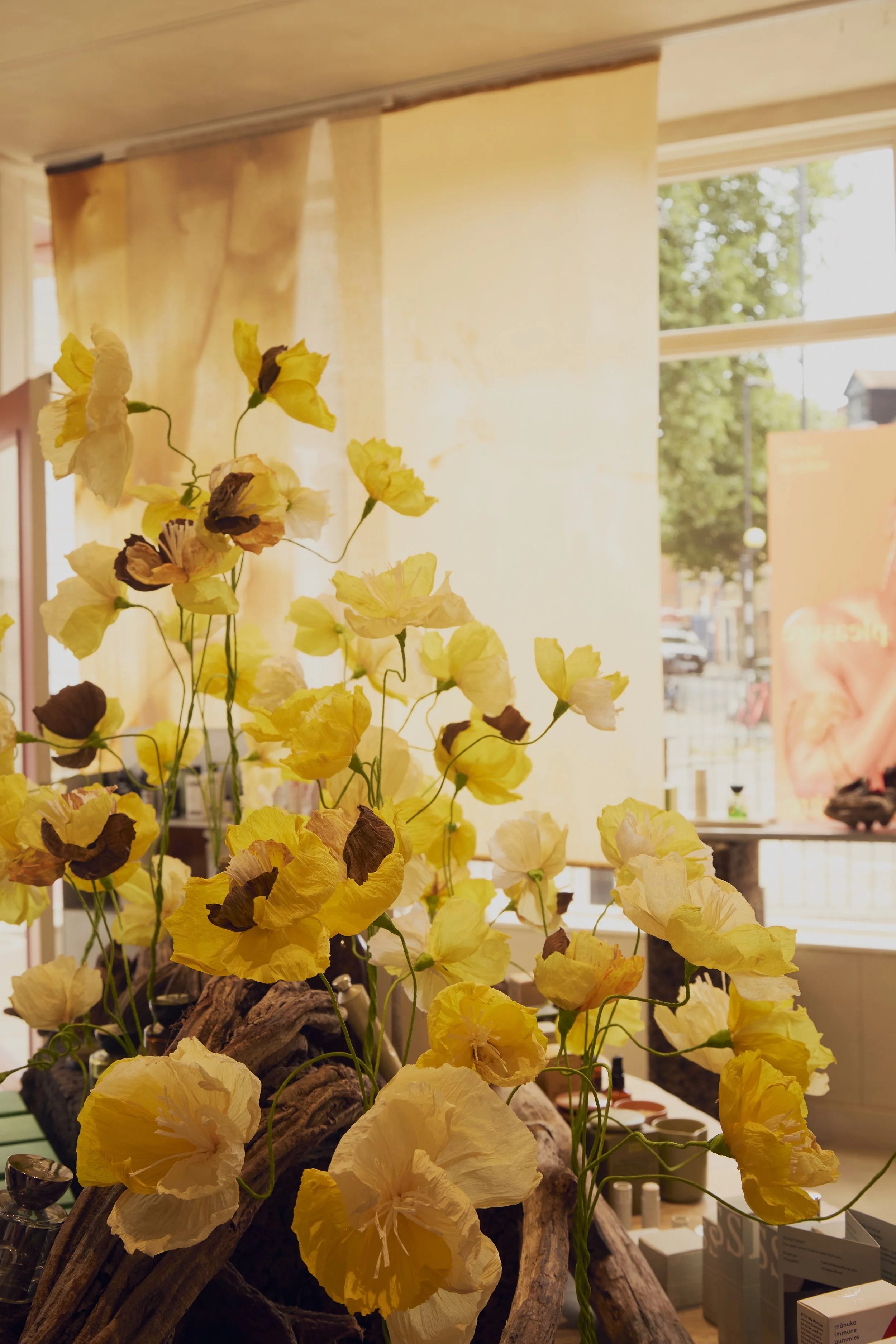behind the bloom.
1. Material Alchemy
Every piece begins with luxury Italian crepe paper.
Dye: Emmeli dyes her paper by hand, creating the unique vibrant aesthetic that defines her work.
Paint: Pastels, watercolours, and acrylics add delicate detail and depth.
Varnish: A whisper-thin layer for texture and permanence — heirloom art that outlives fresh flowers.
No two sheets are ever the same.
2. Free-cut Sculpting
Emmeli rarely uses patterns for commissions.
She begins by taking precise measurements and researching each flower’s structural composition—its spiral, petal count, and natural gesture. With this knowledge, she free-cuts every element by hand, blade guided by observation and instinct.
This technique demands exceptional skill and grants complete creative freedom—the result is a collection of blooms where no two are alike in form, volume, or expression.
For clients requiring exact replicas across installations, Emmeli can create custom patterns — ensuring consistency while preserving the handcrafted soul of each piece.
3. Structural Poetry
Wire skeletons give leaves and stems lifelike sway.
Paper-mâché thorns are sculpted one-by-one — sharp, tactile, dangerous.
Stems are wrapped in dyed crepe for seamless flow.
Nothing is mass-produced. Nothing is repeated.
4. Final Curation
All commissions are styled for optimum sculptural effect — designed to read as stand-alone artworks that can be hung on the wall as confidently as displayed in a vase. For installations, Emmeli styles in-situ, responding to light, architecture, and negative space to maximise dramatic presence.
Each piece is unique — a permanent work of art, never a reproduction.






